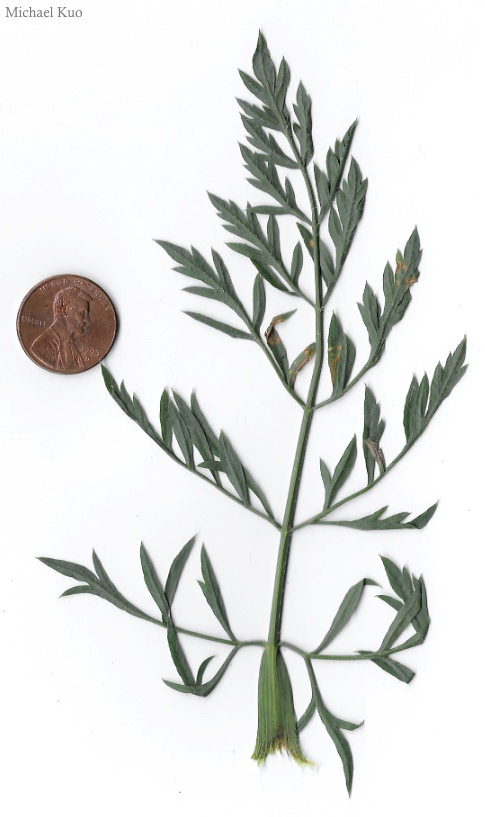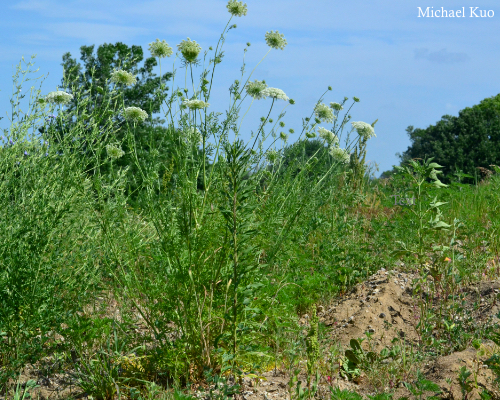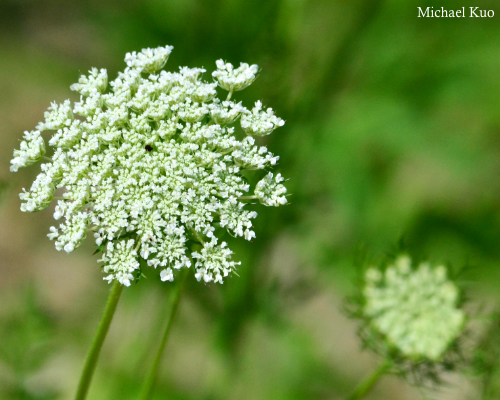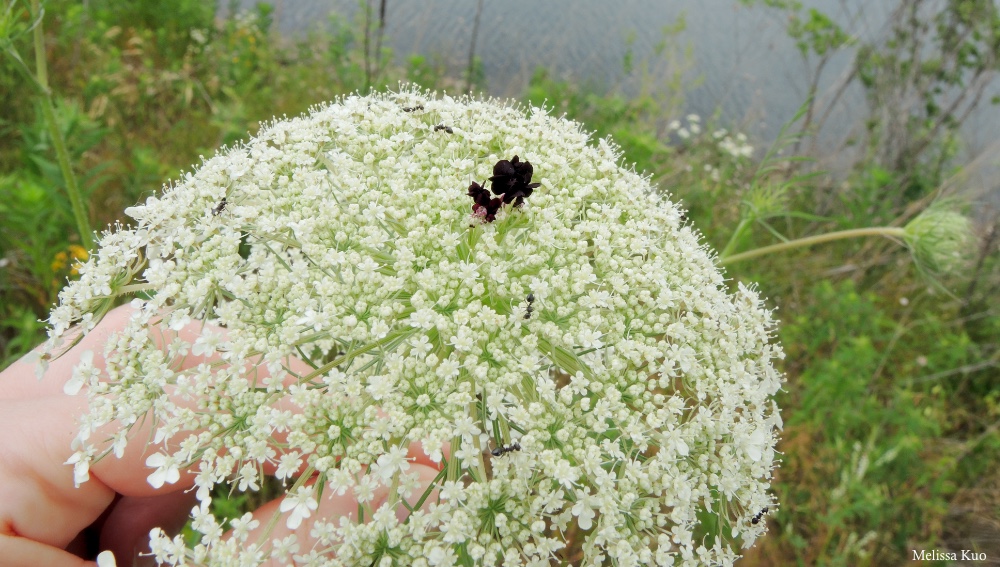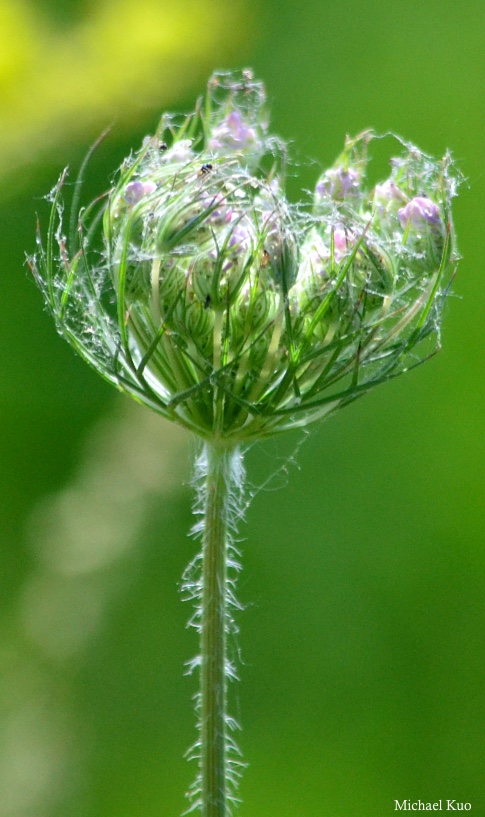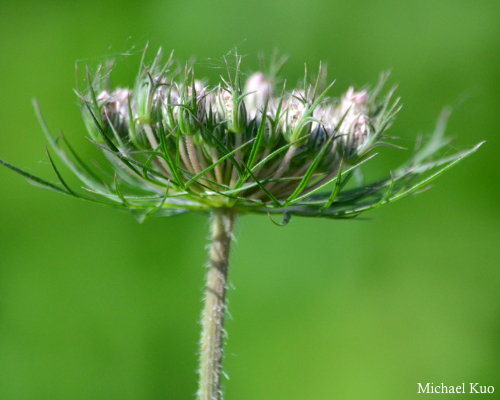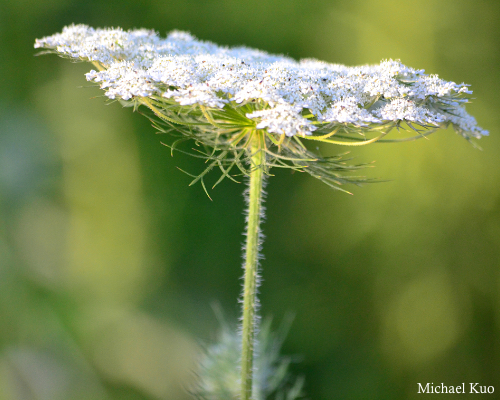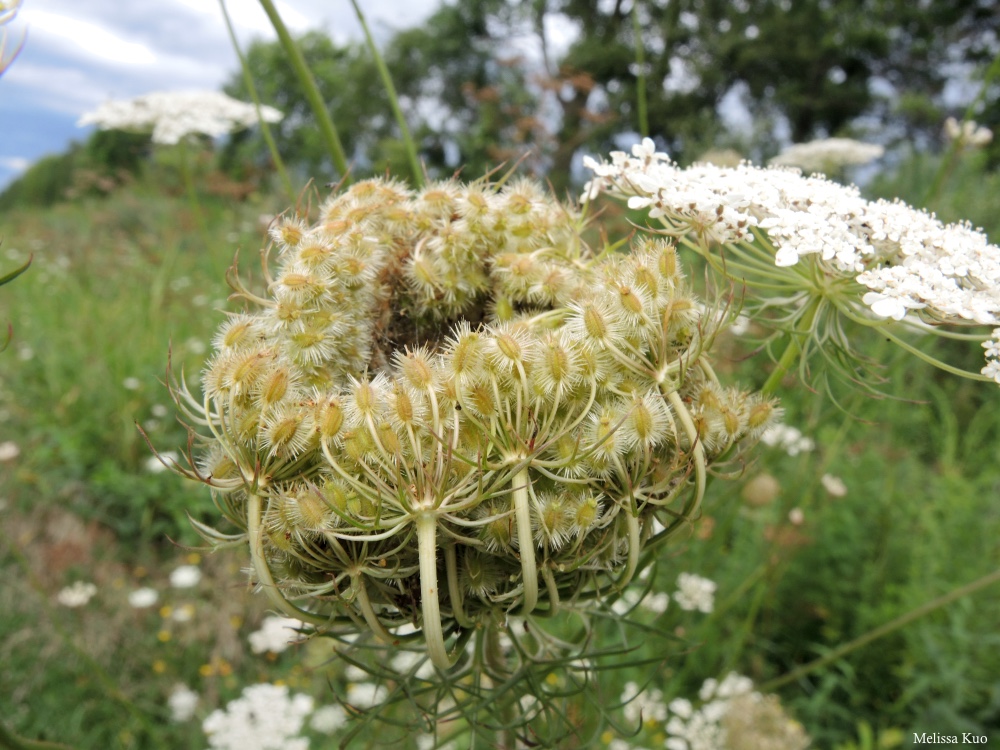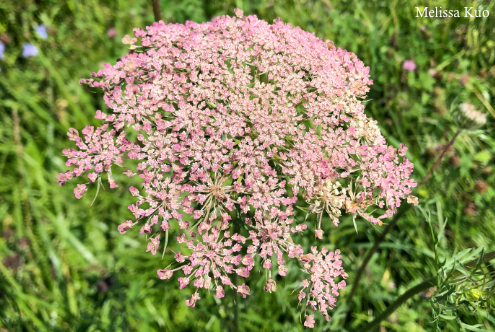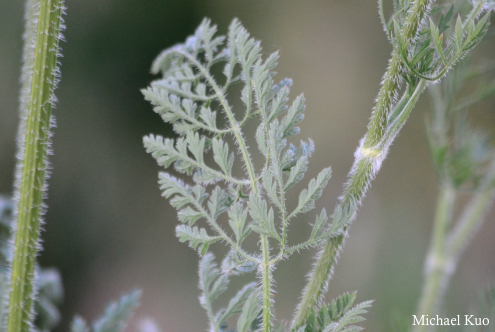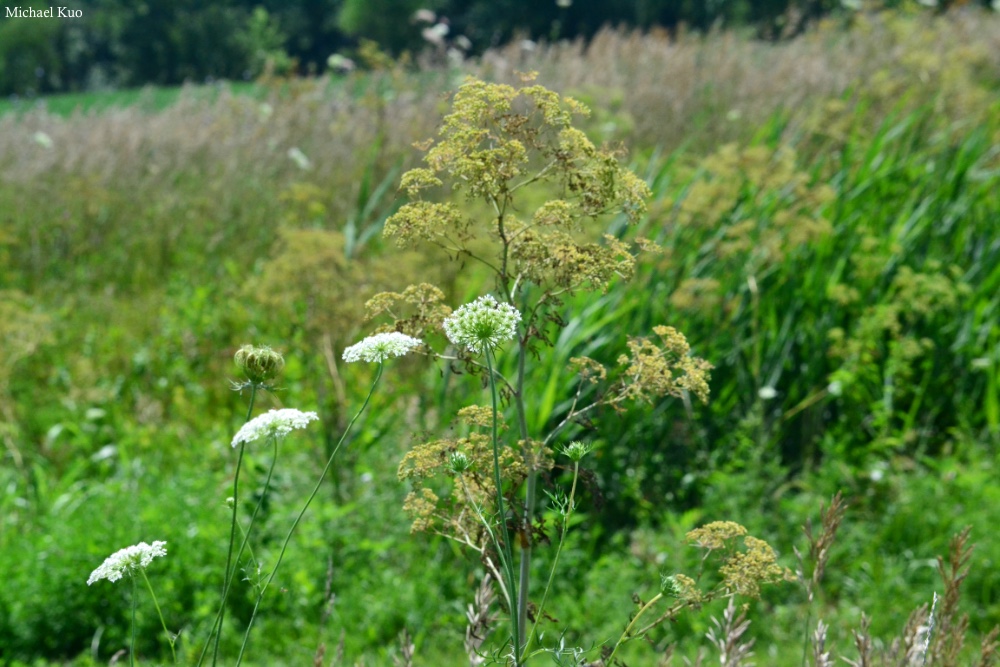 Daucus carota (Queen Anne's lace) |
 seeds in fall |
|
Queen Anne's lace is a common summer sight in the Midwest. The plant favors disturbed-ground locations like roadsides, waste places, empty lots, and fallow fields, and can be recognized by its lacy foliage and large white flowers. Poison hemlock, Conium maculatum, is similar but easily separated with close inspection (see the illustration and discussion below). Queen Anne's lace is a European plant that has established itself in North America. It is reportedly the plant that was the source material for the cultivated carrot. While the long, whitish taproot of Queen Anne's lace is not orange and thick like store-bought carrots, it does smell like carrots. We haven't tried eating the root—and due to the potential confusion with poison hemlock, we don't recommend you do so, either. And anyway, a much more interesting way to enjoy Queen Anne's lace, especially with children, is to search the flowerhead for the "purple heart"; see the illustration below. |
 midwestern range |
|
|
|
|
|
|
|
|
|
|
|
|
|
|
|
|
References: GN Jones 1971, Wilkinson & Jaques 1972, RL Jones 2005, Voss & Reznicek 2012, Kurz 2014, Mohlenbrock 2014, Hilty 2020, USDA 2020. Kuo, Michael & Melissa Kuo (January, 2020). Daucus carota (Queen Anne's lace). Retrieved from the midwestnaturalist.com website: www.midwestnaturalist.com/daucus_carota.html All text and images © , midwestnaturalist.com. |
